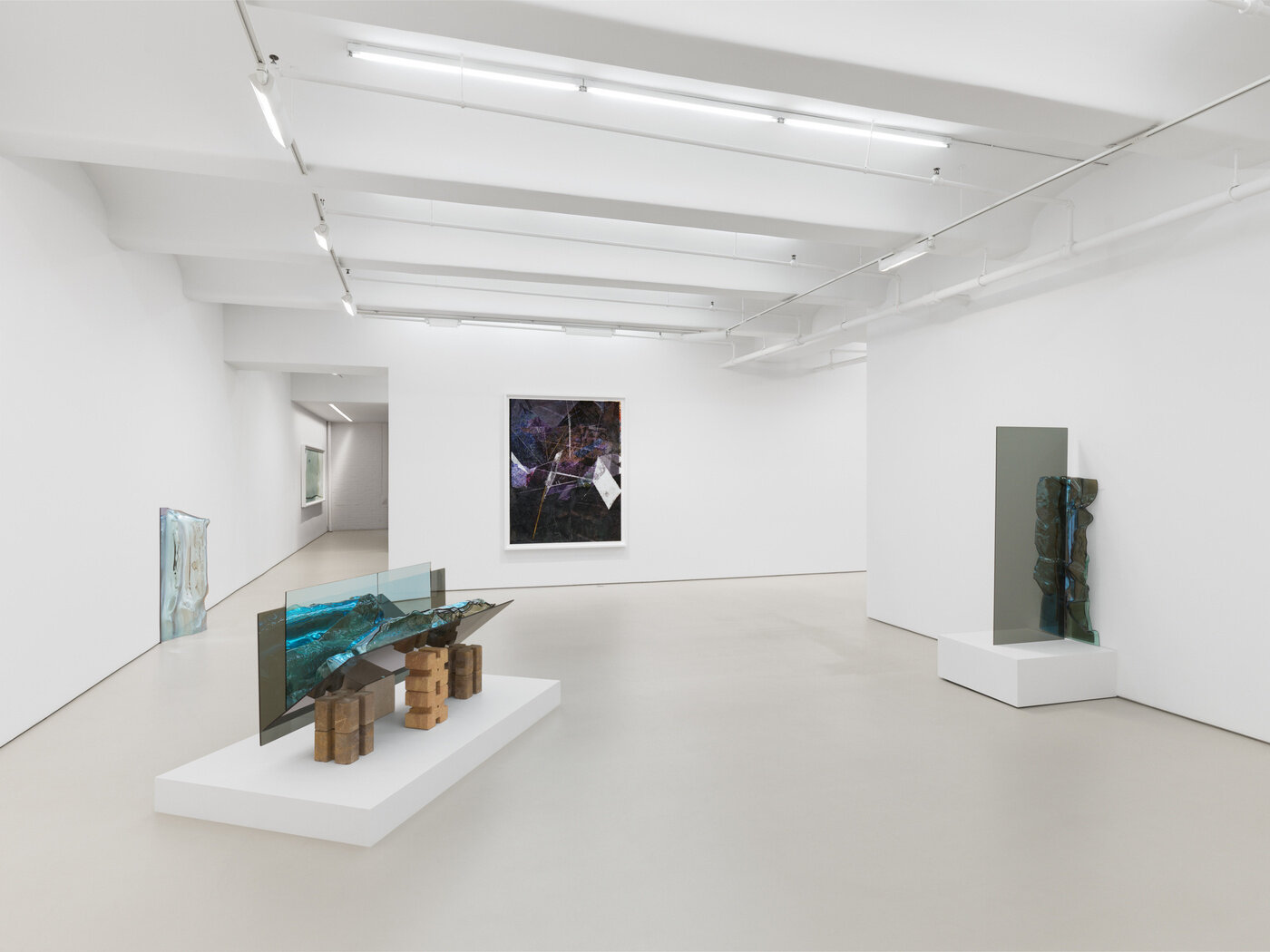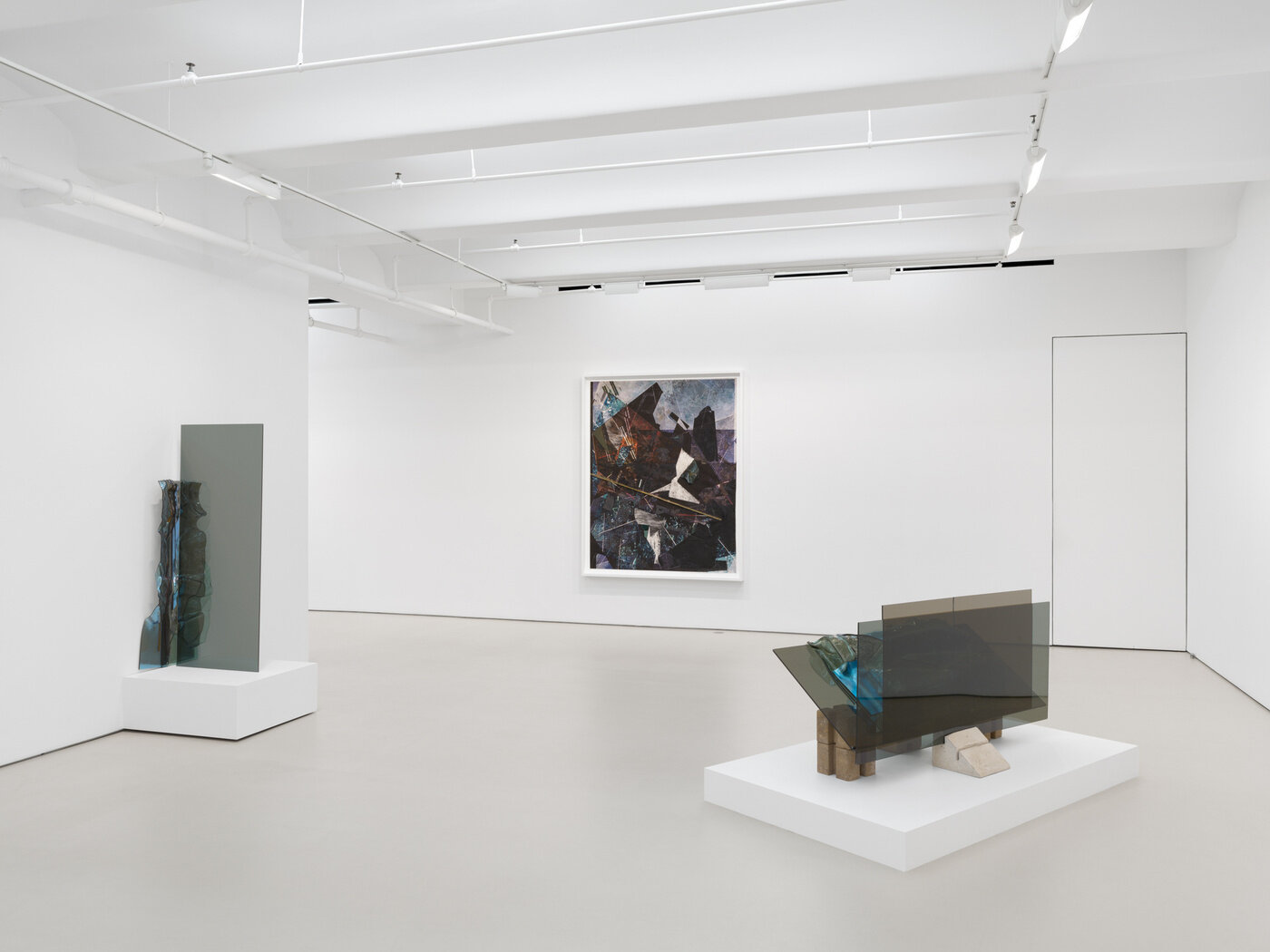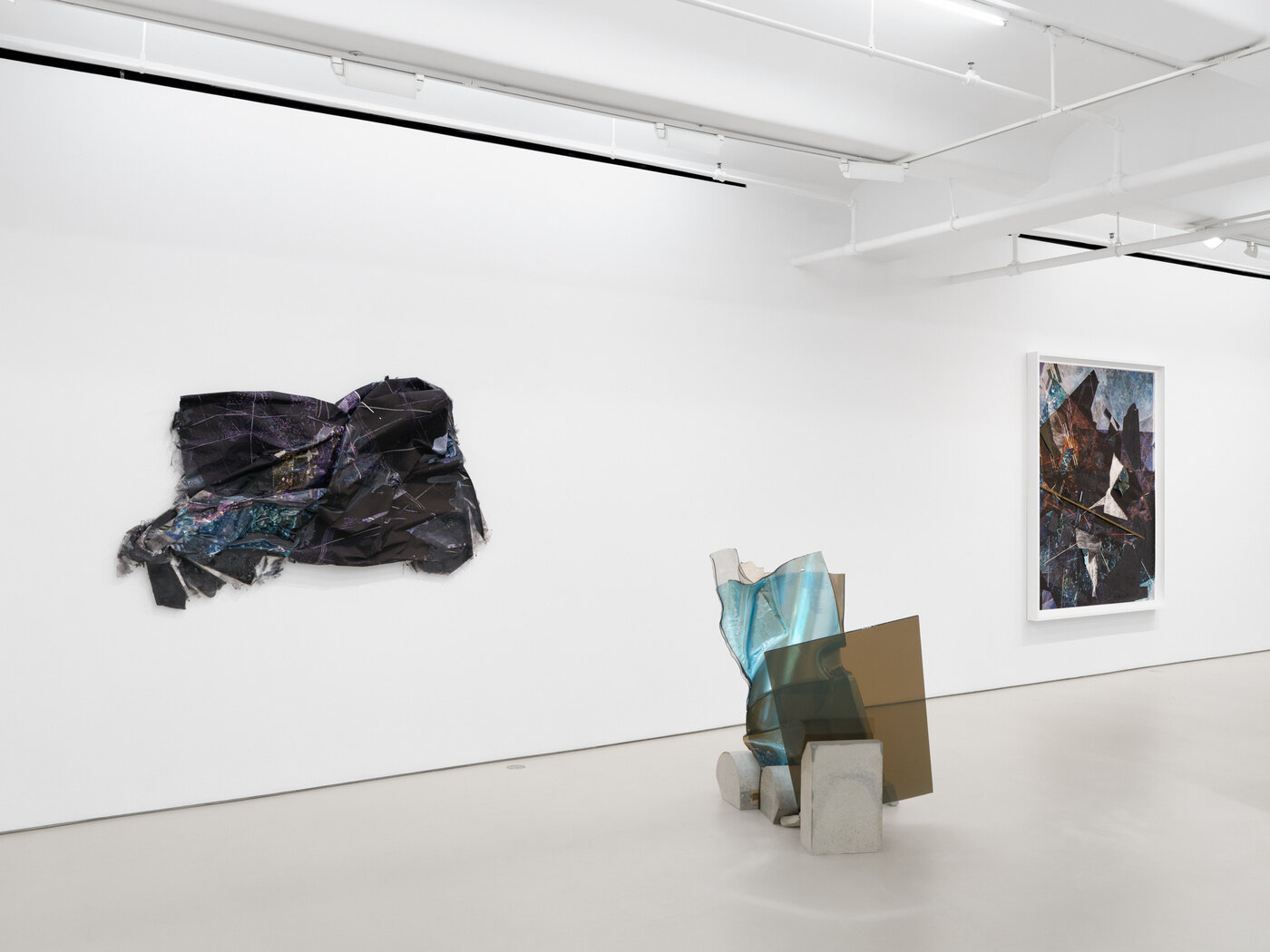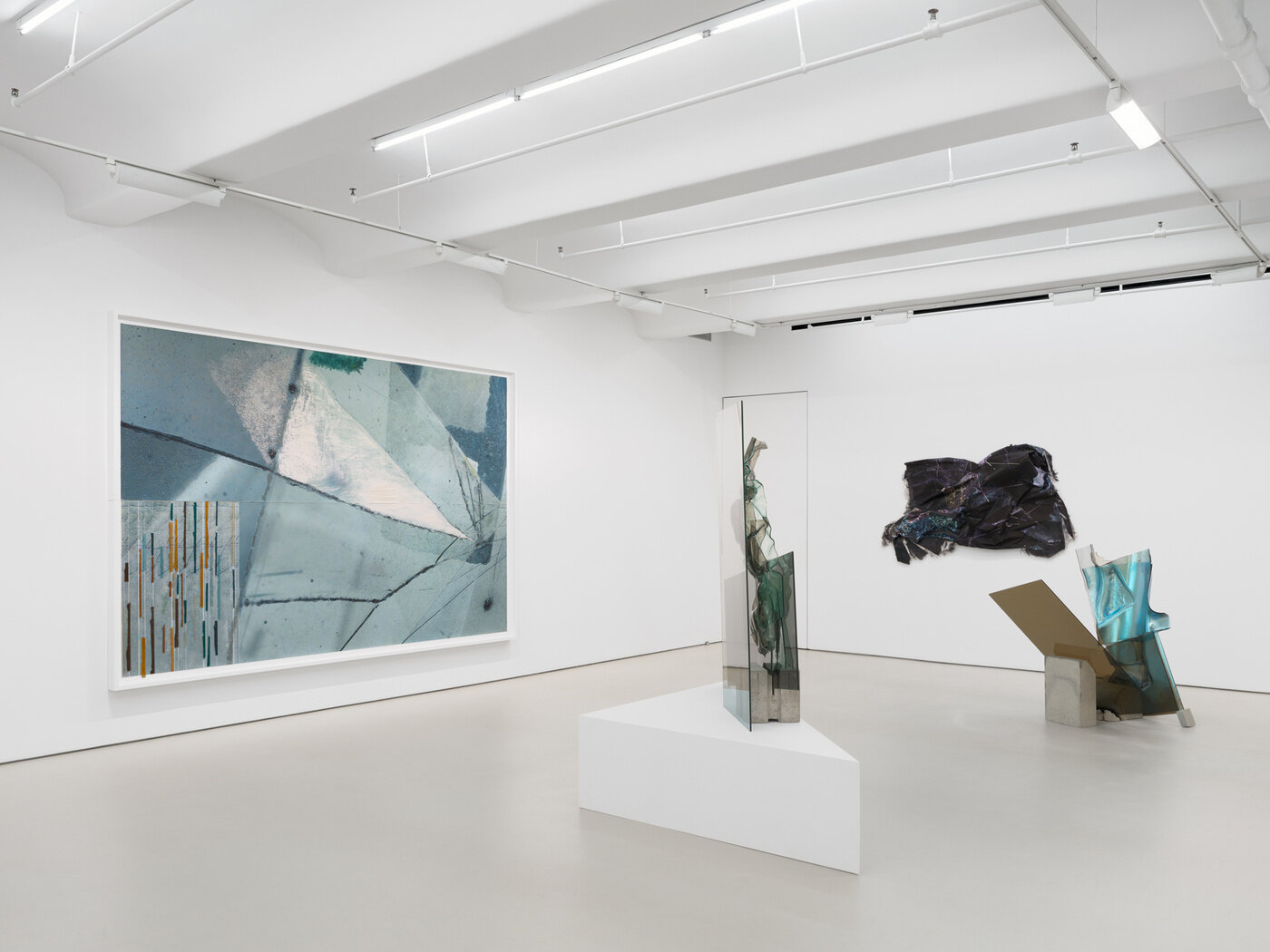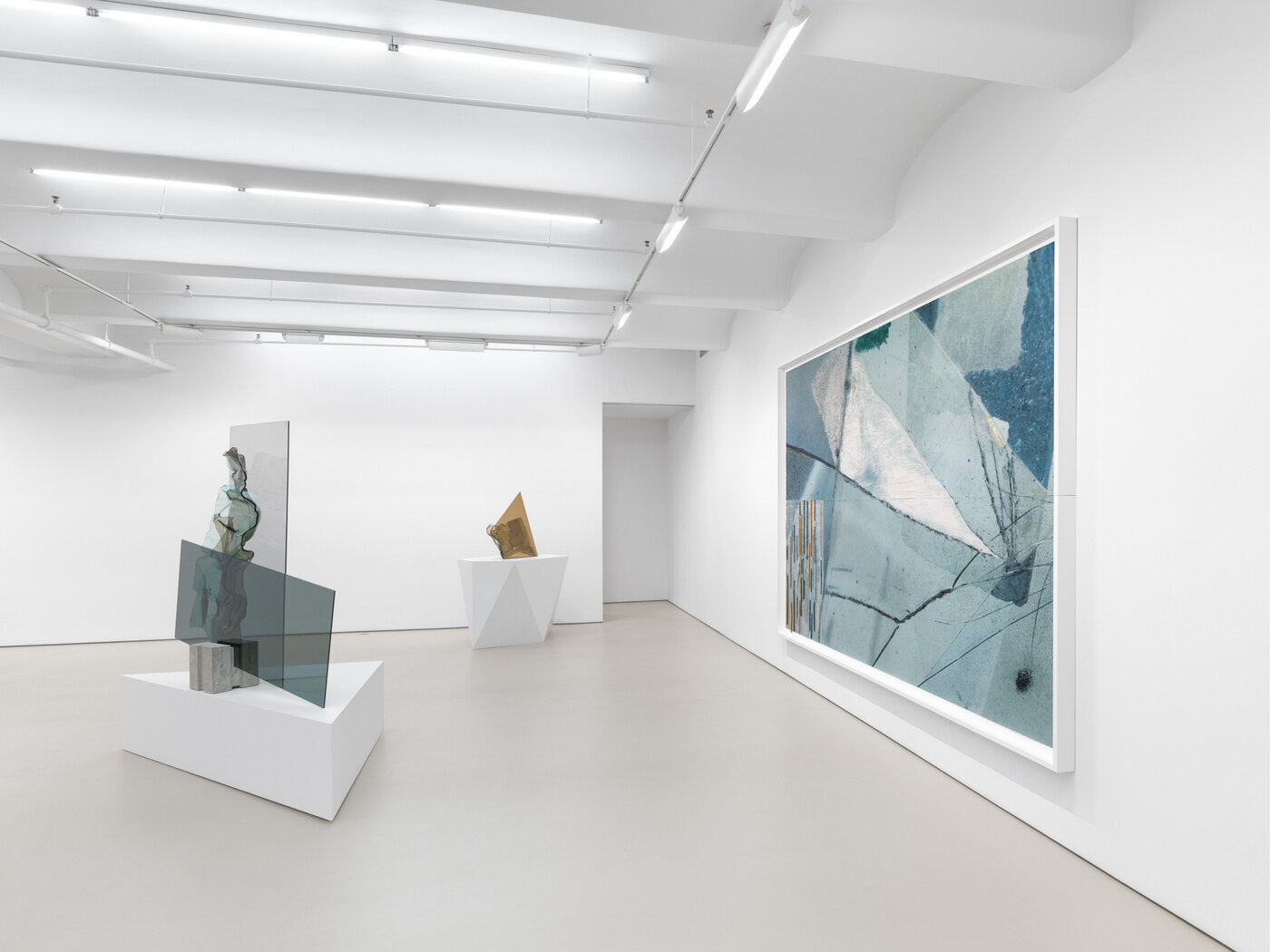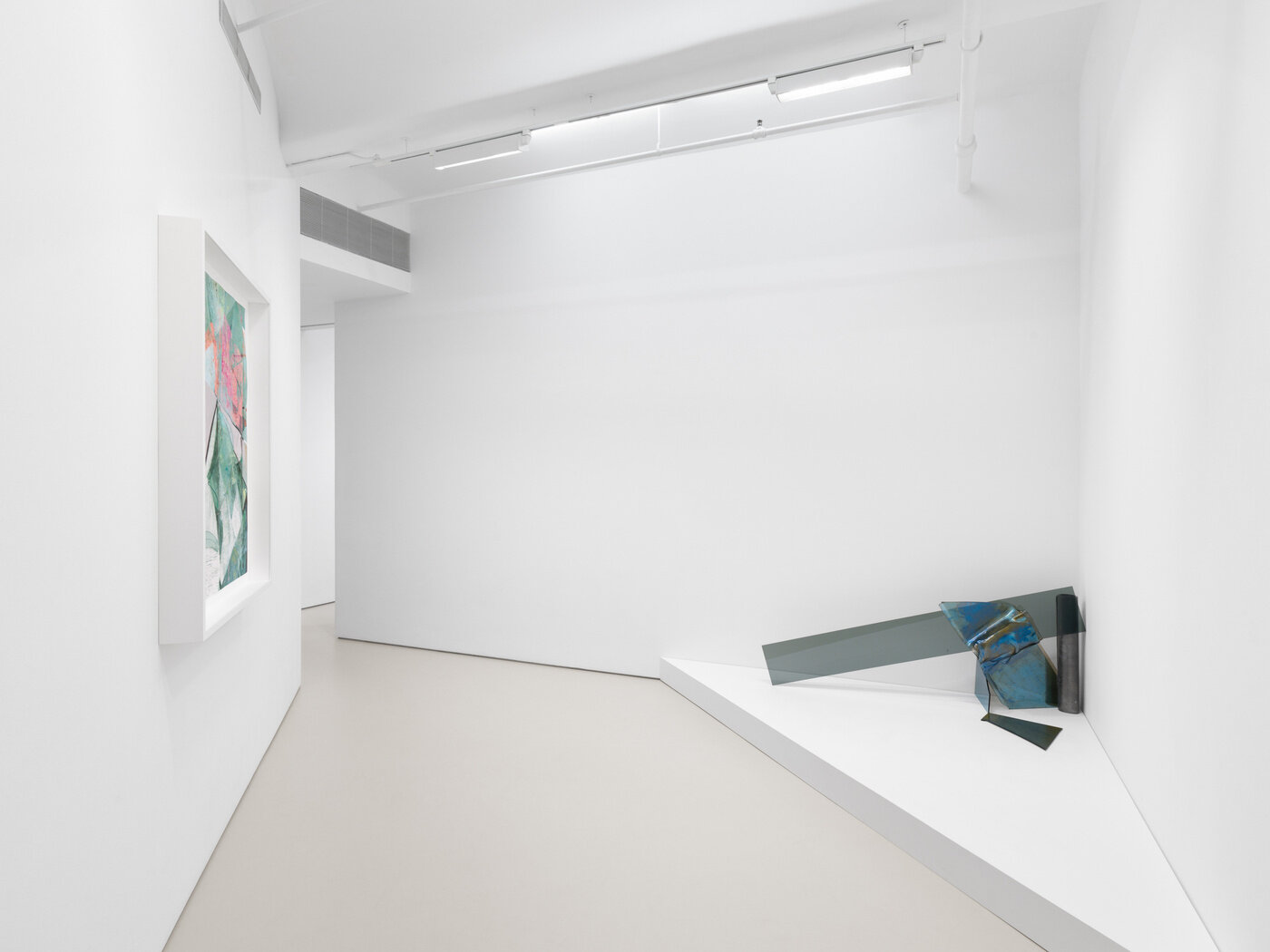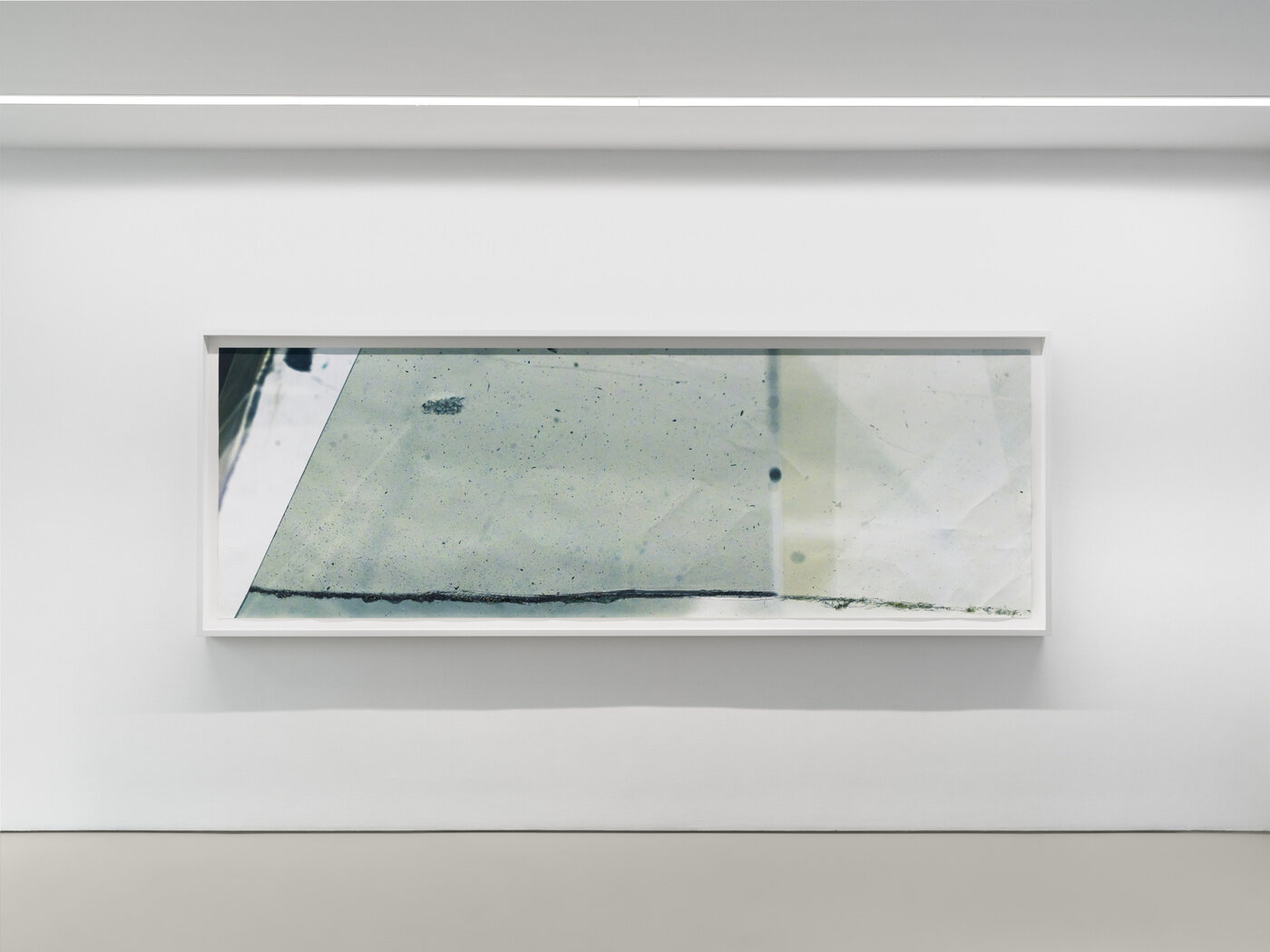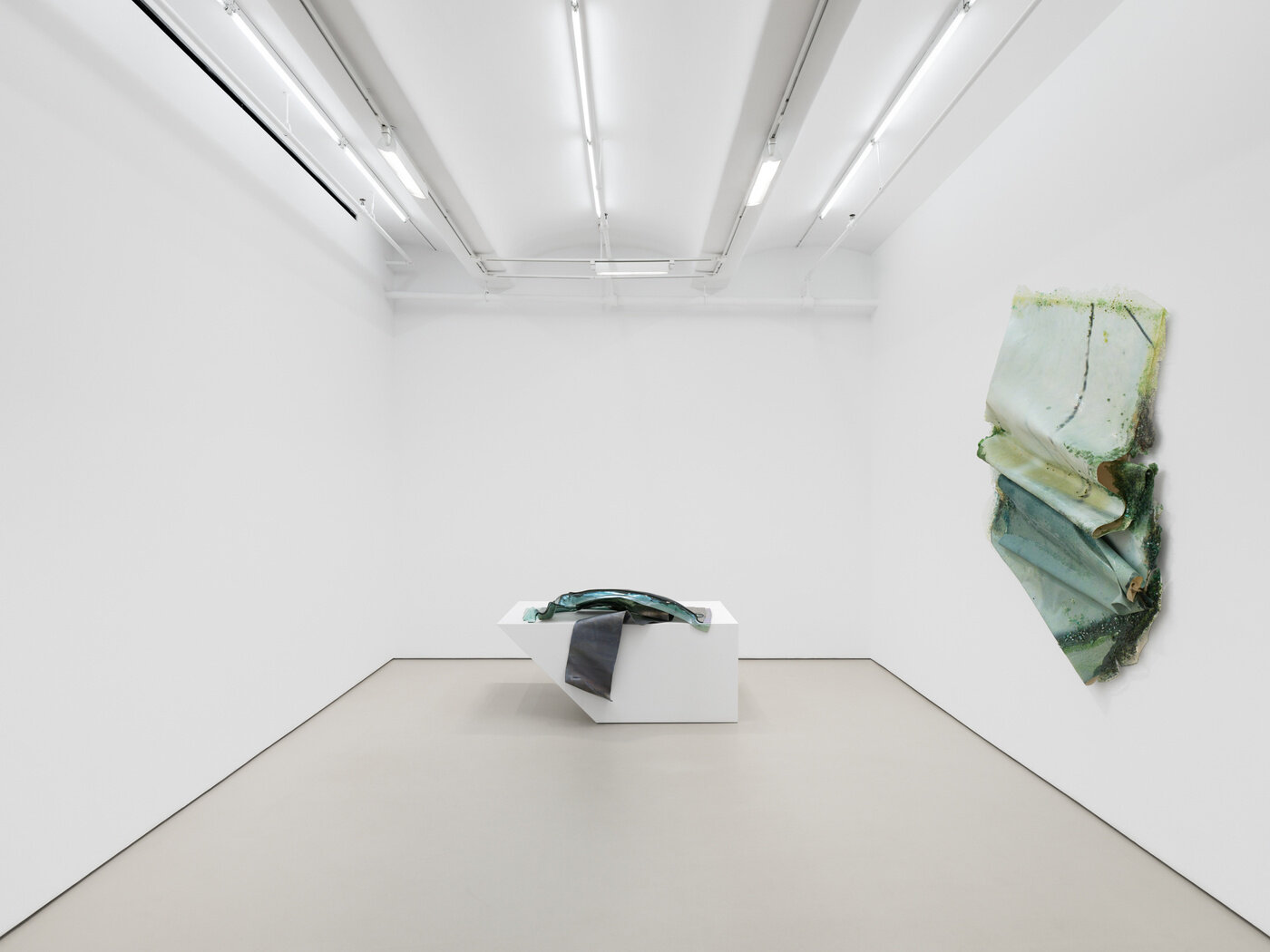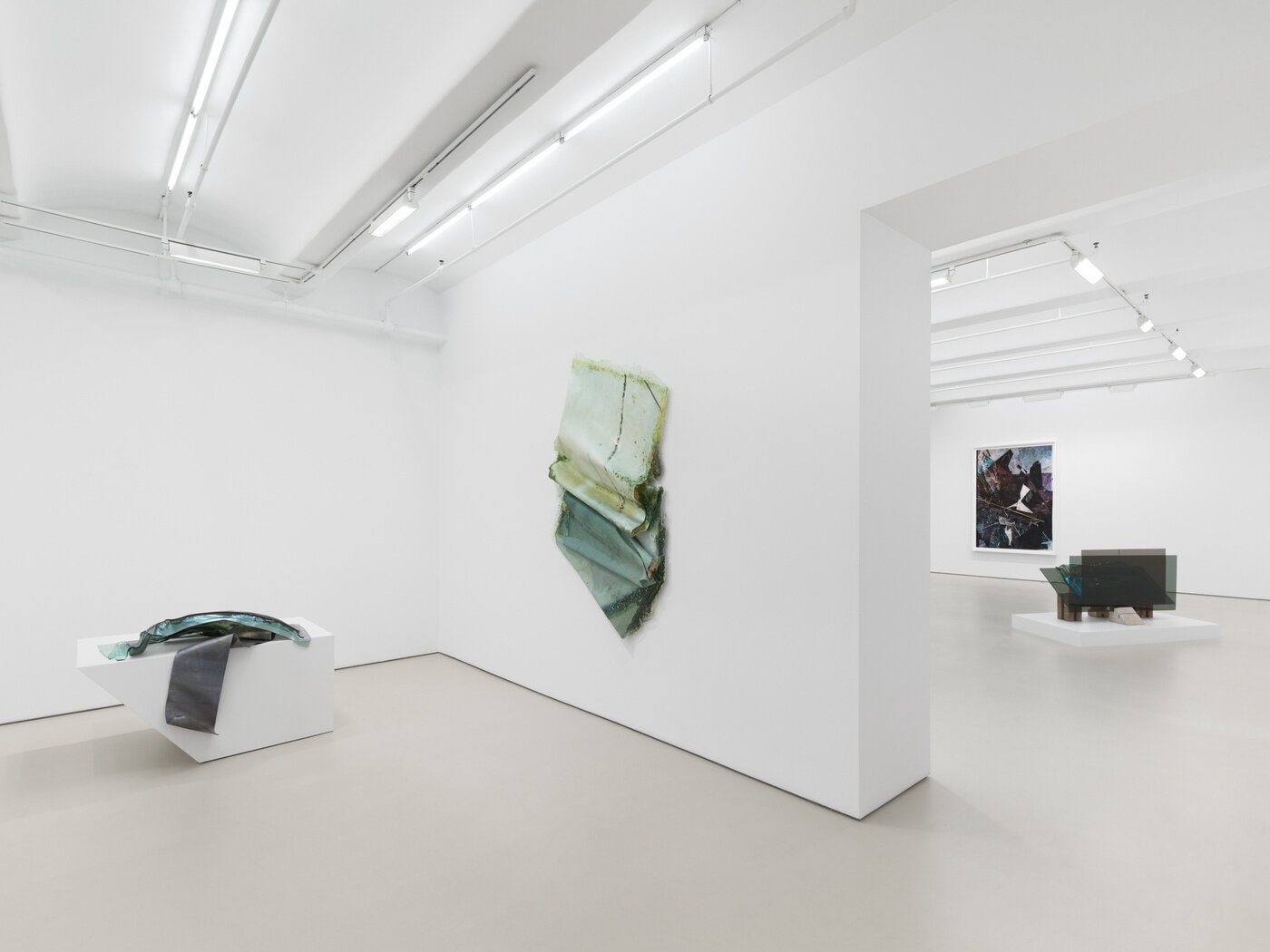Charisse Pearlina Weston: mis-/mé- (squeeze)
Works (Tap to zoom)
Press Release
Charisse Pearlina Weston
mis-/mé- (squeeze)
513 West 20th Street, New York
October 30 – December 20, 2025
Opening reception Thursday, October 30 from 6–8PM
PRESS
PRESS RELEASE
I have stopped watching the news.
I know many people have too.
But still I am ashamed of it.
It is, after all, a very poor attempt
at hiding from all that is happening
and all that most certainly will
happen. I no longer have social media
for a similar reason. I couldn’t cope
with the ways it would inevitably
devour me. Or the ways I would let it
submerge me in its promise of another
version of myself, or how I could be
enraptured by the fantasy that this other
self might somehow slip out from the screen
and into this fleshy, flawed version of me
sitting before it. I longed for it to save
me to some farflung elsewhere. Yet still,
in spite of all this fleeing, something
squeezes me. It wrings me out, and
sets me adrift in this world where
time is out of joint; phantoms fight
phantoms. And fantasy now traipses
and haunts out in the open, where
it shouldn’t be, clouding our judgment,
doing what it couldn’t do before,
letting that deep, filthy, sinister part
of ourselves pop out—
clean. So I grab hold a thread of this
fleshy version of me that has been
unspooling—pull it, hold it taut, and
bring it forward, as far as it will go.
- Charisse Pearlina Weston
Jack Shainman Gallery is pleased to present mis-/mé- (squeeze), an exhibition of new work by Charisse Pearlina Weston, marking the artist’s first solo presentation with the gallery since joining the roster in 2024.
Encompassing sculpture, photography, painting and installation, this new body of work mobilizes pressure and ‘the squeeze’ to examine desire as a libidinal structure of ideological misrecognition. Through formal explorations, this series articulates the pressurized terms of displacement through which racialized recognition is constituted. For Black life, misrecognition is not abstract error but an intimate structure: a hidden compression of desire and a deformation of visibility that bears down on the interior. By warping reflective surfaces and imagery that promise clarity—the mirror, the photograph—the works in this exhibition stage how Black interior life persists in and against ‘the squeeze,’ holding open opacity, fracture and concealment as modes of resistant intimacy.
The English prefix mis- (from Old English mis-, ‘wrongly,’ ‘amiss,’ ‘astray’) and its French counterpart mé- (from Latin minus, ‘less’ and male, ‘badly’) both carry a sense of deviation. Each marks a linguistic force that bends its root off course. As such, its prefixal operation is not simply one of failure—it places its subject under duress, rendering it only ever able to receive less than what it seeks. In this sense, the very etymology of mis-/mé- enacts ‘the squeeze’: a constrictive illusion that erroneously transforms the distorted into the intelligible and the incomplete into the whole.
In Lacanian theory, méconnaissance (‘misrecognition’) occurs when a subject identifies with an image or symbol that, endowed through the subject’s desires, promises coherence but is, in fact, alienating. Althusser extends this concept through interpellation, where ideology hails individuals into subjecthood by offering identity and belonging through misrecognition. These are not passive operations: they apply pressure on the subject to conform to predetermined and often oppressive symbolic structures, pressures which are not evenly distributed. For Black life, misrecognition is never only alienation but also a violent intimacy where the demand to be seen and placed is bound to the risk of overexposed erasure.
The sculptures in this series—panes of glass pressed and held by one another and fused into precarious forms—materialize this ideological pressure and ‘the squeeze.’ The physical force exerted by the glass onto itself and the implied threat of its collapse onto the body, fix identity to incongruence. In this way, these uneasy structures echo how Black intimacy is regulated and foreclosed: spaces of tenderness and interiority are pressed to the brink of caving under the weight of surveillance and the risk of violence.
Each sculpture uses surveillance glass, whose material qualities of reflection and concealment have been deformed through differing processes and manipulations. These interventions correlate with and undo the ways in which surveillance enacts its own prefixal squeeze: where surveillance glass would otherwise frame in advance the sites at which the subject will be seen or heard, in this instance its surface becomes transparent where it shouldn’t and reflects in all directions rather than toward one focal point, never allowing the appearance of ‘wholeness’ to stabilize. Furthermore, the environmental conditions necessary for surveillance glass to operate (lighting, position, angle) are withdrawn, thus disabling it. These works gesture toward the racialized economies of visibility that shape Black life, where opacity and refusal preserve the possibility of interior life.
The works on canvas extend this inquiry. Beginning as collaged documentation photographs of earlier sculptures, they undergo recursive manipulations—etching, layering, recomposition and even literal squeezing. Each stage pushes the work further from its referent: the three-dimensional collapses into distorted photographs, which are then effaced by the actions of the hand, only to return to sculpture, now displaced and alienated from its originary self. Here, the subject and its image cannot stand still; they are caught instead in the refracting loop of desire’s racialized libidinal economies.
Through these unstable encounters, the sculptures and canvases presented in mis-/mé- (squeeze) demonstrate the persistence of Black intimacy and interiority under duress.
